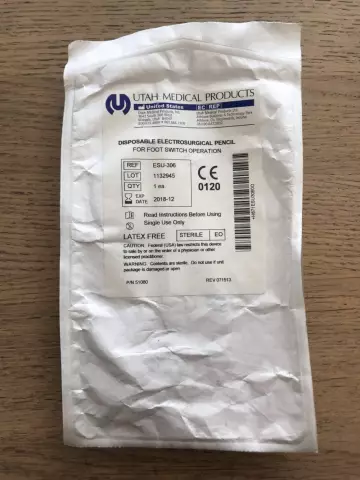- Author Rachel Wainwright [email protected].
- Public 2023-12-15 07:39.
- Last modified 2025-11-02 20:14.
Histamine test
The histamine test (1) is a method for studying the secretory function of the stomach, based on the property of histamine preparations to intensify the secretion of gastric juice more intensively than other substances, having a predominant effect on the parietal cells that secrete hydrochloric acid.
Types of histamine test:
- double (synonym: Riversa double test) - carried out by means of a double subcutaneous injection, with an interval of 30-60 minutes, 0.3 or 0.5 mg of histamine dihydrochloride;
- simple (synonym: single histamine test) - carried out by means of a single subcutaneous injection of histamine dihydrochloride (0.008 mg per 1 kg of body weight) or histamine phosphate (0.01 mg / kg);
- enhanced (synonyms: Key test, maximum histamine test) - carried out by a single subcutaneous injection of histamine dihydrochloride (0.024 mg / kg) or histamine phosphate (0.04 mg / kg); used to identify true achlorhydria.
Histamine test (2) is a method for diagnosing pheochromocytoma, based on the phenomenon of a sharp increase in blood pressure after intravenous injection of histamine in the presence of a tumor.
Found a mistake in the text? Select it and press Ctrl + Enter.






